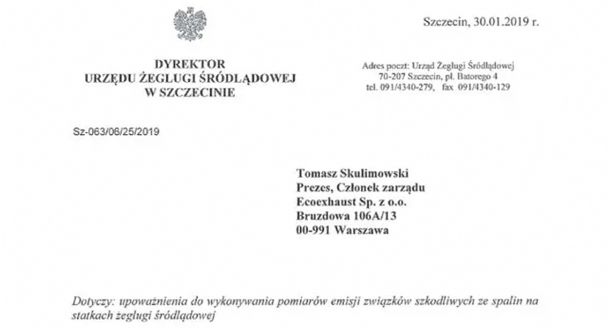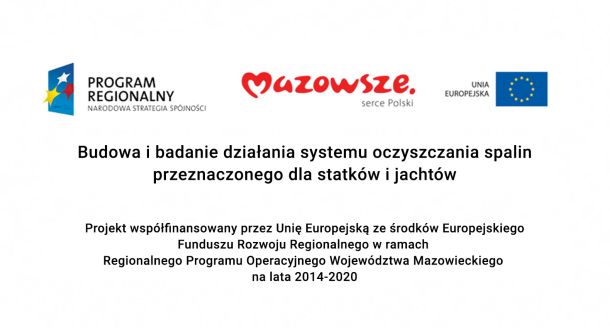Challenges for SCR-DPF systems on inland vessels
Stage V EU is a new regulation that came into effect in 2019 for inland vessel engines up to 300 kW, and above 300 kW will come into effect in 2020. This standard is used for new ships, in which case the engine manufacturer must obtain Stage V bench approval for the engine or engine/group family. However, initiatives such as lower port fees for Stage V-compliant ships, Greenaward certification and sustainable shipping company policies are prompting the retrofitting of exhaust after-treatment systems for existing engines installed on board or during retrofits. New emission standards are forcing the use of particulate filters and selective catalytic reduction in most cases to achieve soot and NOx limits.
Installing exhaust gas cleaning systems aboard inland vessels can solve three major problems: space, cost and reliability.
Location
When we install exhaust gas after-treatment systems on newly built vessels or existing ones during conversions or independent retrofits, space in the engine room of an inland barge is very limited. The main problem is keeping the exhaust backpressure limit low with particulate filters. The rule of thumb is: if you increase the cross-sectional area of the filters then the backpressure decreases, but then, of course, the problem is space. DPFs cause the greatest pressure drop in the entire system due to their wall flow. But a clean filter isn’t the problem – we have to have room for the collected soot on the walls, which creates incredibly high back pressure. Therefore, in some cases, the exhaust aftertreatment system seems to be a rather large device. However, they can fit in almost any machine room due to axial or radial flow to the filter sections – it depends on the layout of the machine room. Space for a urea mixing pipe or fuel injection upstream of a diesel oxidation catalyst can also be a problem, but our team designed a system even for the very small engine room of an inland pusher powered by a 405 kW Scania engine. It can be seen in the photo below.
Costs
This problem was flagged by many inland ship owners we spoke with during the development of our Ecoexhaust SCR-DPF system. It is not easy to install a sufficient cross-section of DPF with active regeneration system and keep the product at a good price. Good design and choice of materials are key in this case. There is no need to install a system designed for luxury yachts that can run on any fuel and allow 8 hours of low-load engine operation because guests want to see dolphins. In the European Union, inland vessels are required to use EN 590 fuel. This means that you can use a system dedicated to this application and rely on a combination of passive and active filter regeneration. Engines used on inland vessels are mainly up to 1,200 kW, and it is good if the exhaust gas aftertreatment system manufacturer uses scalable urea dosing systems. Then you pay as much as you need. As I described earlier, the low allowable backpressure forces designers to calculate systems with large DPF volumes. Then it is best to use economical (but not poor quality!) filter coatings that are sufficient for our application. The same is true for SCR, DOC or ammonia slip catalyst. If the exhaust gas treatment manufacturer looks at each component of the system in terms of cost, the results can be excellent and reduce the price by as much as 30-40%.
Reliability
You’ve probably heard or it’s your own experience that the first automotive dpf systems had a lot of problems with clogging, cleaning periods or other failures. Do you think then, what will happen to my ship? First, the duty cycles of car engines and inland vessels are dramatically different. You would never stand in traffic twice a day for a month, and even during low evaporation your engine runs with exhaust temperatures high enough to regenerate the filter. Second, the ratio of DPF volume on ships to engine volume is 4-5 times higher than in cars, which means the filters have much more room to trap particulates within their walls. Third: ESTRIN (the European Standard Setting Technical Requirements for Inland Waterway Vessels) requires the use of a bypass valve in the event of failure of DPF exhaust gas after-treatment systems. Another best practice is to use only proven equipment from the road and off-road sectors. It is very important to monitor the exhaust aftertreatment system, especially the DPF components – such action can prevent clogging of the filter and allow optimal cleaning intervals. For example: Ecoexhaust systems uses a special remote monitoring system for both DPF and SCR architecture, so we can inform our customers about the status of their equipment and calibrate faster than by conventional means.
As you can see above, space constraints, cost reduction and reliability are not easy topics when it comes to exhaust gas after-treatment systems for Stage V on inland vessels, but with good design and planning they cease to be a problem. A system designed specifically for an inland vessel helps the shipowner achieve his needs: Stage V certification, smooth operation and clean air around the ship – all in a cost-effective way!
If you would like more information on exhaust aftertreatment for inland and marine vessels, visit Ecoexhaust at www.ecoexhaust.eu or email me directly on Linkedin, in the comments below, or email me at skulimowski@ecoexhaust.eu
Contact us
Our team is happy to answer any questions.
Contact
-
Bruzdowa 106a/13
02-991 Warsaw
woj. mazowieckie
Poland -
+48 506 508 330
+48 600 501 050 -
info@ecoexhaust.eu


